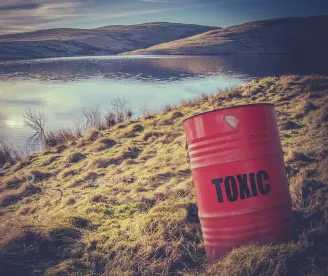A small business that fluorinates plastic containers and fuel tanks secured a victory on March 21 under the Toxic Substances Control Act (TSCA). The U.S. Court of Appeals for the Fifth Circuit invalidated two unilateral orders the U.S. Environmental Protection Agency (EPA) had issued directing that company to stop fluorinating – and, in effect, to shut down and go bankrupt. The case is Inhance Technologies, L.L.C. v. USEPA, No. 23-60620.
Background
Inhance has been fluorinating plastic containers and fuel tanks for 40 years to help companies meet the container permeability requirements of U.S. Department of Transportation regulations, EPA pesticide regulations, and EPA evaporative emission standards. In the 1990s, EPA recommended fluorination to meet its requirements. In late 2021, however, EPA learned that certain unintentionally-present long-chain perfluoroalkyl carboxylates (LCPFACs, a form of per- and polyfluoroalkyl substances, or PFAS) could have, to some extent, migrated from the fluorinated container into the container contents. It then informed Inhance.
By then, EPA had promulgated a significant new use rule (SNUR) for LCPFACs, 40 C.F.R. § 721.10536. See our alert on that SNUR. It declared that, with few exceptions, any use of those LCPFACs was a “significant new use,” meaning that no one could manufacture or process those LCPFACs without first submitting a significant new use notice (SNUN) and obtaining EPA clearance.
Inhance submitted under protest SNUNs for the LCPFACs it unintentionally manufactured, but did not stop fluorinating containers and fuel tanks. Instead, it argued to EPA that a) its unintentional manufacture of those LCPFACs was not a new use since that use had been ongoing for decades, b) any LCPFACs it unintentionally formed were exempt as impurities, and c) Inhance lacked fair notice that it was subject to the SNUR. EPA rejected these arguments. In particular, it rejected the “not a new use” argument because Inhance had not notified EPA during the 2015 and 2021 comment periods on the proposed SNUR that its manufacture of the LCPFACs was an ongoing use. EPA issued a section 5(f) order claiming that Inhance’s manufacture of some LCPFACs presents an unreasonable risk and a section 5(e) order claiming that its manufacture of others may present an unreasonable risk. Both orders told Inhance to stop manufacturing those LCPFACs, i.e., to stop fluorinating. Inhance appealed the orders to the Fifth Circuit.
The Court Decision
Two panel members issued an opinion; the third member concurred with the judgment. The opinion found that EPA had exceeded its statutory authority under TSCA section 5 by regulating a use that was not “new.”
EPA argued to the court that a “new” use is any use “not previously known to the EPA.” The opinion disagreed, saying, “A forty-year-old manufacturing process is not ‘new’ in any pertinent sense of the word …. EPA’s interpretation of Section 5 distorts TSCA’s framework and defies common sense.” The court focused on the differences between section 5 and section 6. Section 5 applies to new chemicals and uses, and the SNUR provisions enumerate factors to consider that are forward-looking. Section 6 applies to existing chemicals and their ongoing uses. Section 6 provides more procedural steps before EPA can regulate ongoing uses, but Section 5 has fewer steps since the chemicals and uses it applies to are new. The court advised EPA that section 6 is available if it wants to regulate Inhance’s fluorination process, so long as it meets the section 6 requirements.
The opinion also found that EPA’s position raised constitutional due process concerns because Inhance did not have adequate notice that the SNUR would apply to LCPFACs manufactured in the course of its fluorination process unless it notified EPA of an ongoing use – at a time when Inhance did not know that it was engaging in that use.
Significance of the Court Decision
Inhance is the first court decision to address EPA’s rulemaking authority for SNURs. It did not resolve issues raised in related proceedings about whether the LCPACs qualified as impurities. Still, the decision significantly undermines the expansive approach that EPA has taken to date in establishing whether a given use of a chemical is “new” or not and could limit the reach of EPA’s ability to use SNURs as tools to restrict existing chemicals. EPA acknowledges that it cannot declare ongoing uses as significant new uses. Prior to this decision, under EPA’s interpretation of its SNUR authority, industry bore much of the burden of ensuring that EPA learns of those ongoing uses during the proposed SNUR comment period or beforehand. The opinion now changes the allocation of that burden, at least in some cases.






 />i
/>i
